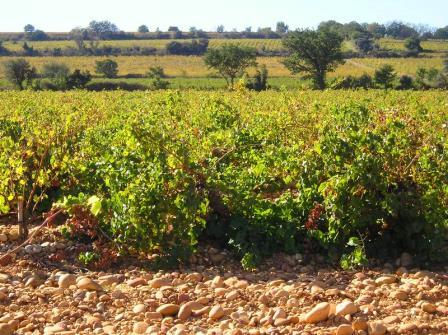2010 Domaine de Fontavin Châteauneuf-du-Pape Cuvée David et Goliat Châteauneuf-du-Pape Rhône France Wine Tasting Note
2147 Views
|
2010
Domaine de Fontavin Cuvée David et Goliat (Châteauneuf-du-Pape)
Incense, licorice and jammy berries, full bodied, fresh, and balanced, but perhaps a bit too much oak in this modern adaption of Chateauneuf du Pape which leaves it feeling a little bit dry in the finish. If it comes together with time, it will be a better wine, deserving a higher score. 2,147 Views Tasted May 31, 2013 |

When to Drink Domaine de Fontavin, Anticipated Maturity, Decanting Time
Domaine de Fontavin can be enjoyed on the young side. Young vintages can be popped and poured, or decanted for about 1 hour, give or take. This allows the wine to soften and open its perfume. Older vintages might need little decanting, just enough to remove the sediment.
Domaine de Fontavin is usually better with 3-4 years of bottle age. Of course, that can vary slightly, depending on the vintage. In the best vintages, the wine should be consumed within 5-12 years after the vintage.
Serving and Decanting Domaine de Fontavin with Wine, Food Pairing Tips
Domaine de Fontavin is best served at 15.5 degrees Celsius, 60 degrees Fahrenheit. The cool, almost cellar temperature gives the wine more freshness and lift.
Domaine de Fontavin is best served with all types of classic meat dishes, veal, pork, beef, lamb, duck, game, roast chicken, roasted, braised, stewed dishes, sausage, barbecue, and cassoulet. Domaine de Fontavin is also good with Asian dishes, and hearty fish courses like tuna, mushroom pasta, eggplant, cheese and tomatoes.
The white wine of Domaine de Fontavin is best served with a myriad of different seafood dishes, shellfish, crab, lobster, sushi, sashimi, chicken, pork, and veal, as well as Asian cuisine.
Domaine de Fontavin also produces red, white, and rose' wine in the Gigondas, Vacqueyras, and Cotes du Rhone appellations from 31 hectares of vines they own. The vineyards are divided as follows; 16 hectares in the Cotes du Rhone, 6 hectares in Gigondas, 4 hectares in Vacqueyras, and 3 hectares in the Muscat de Beaumes de Venise as well as one hectare of unclassified vines.

